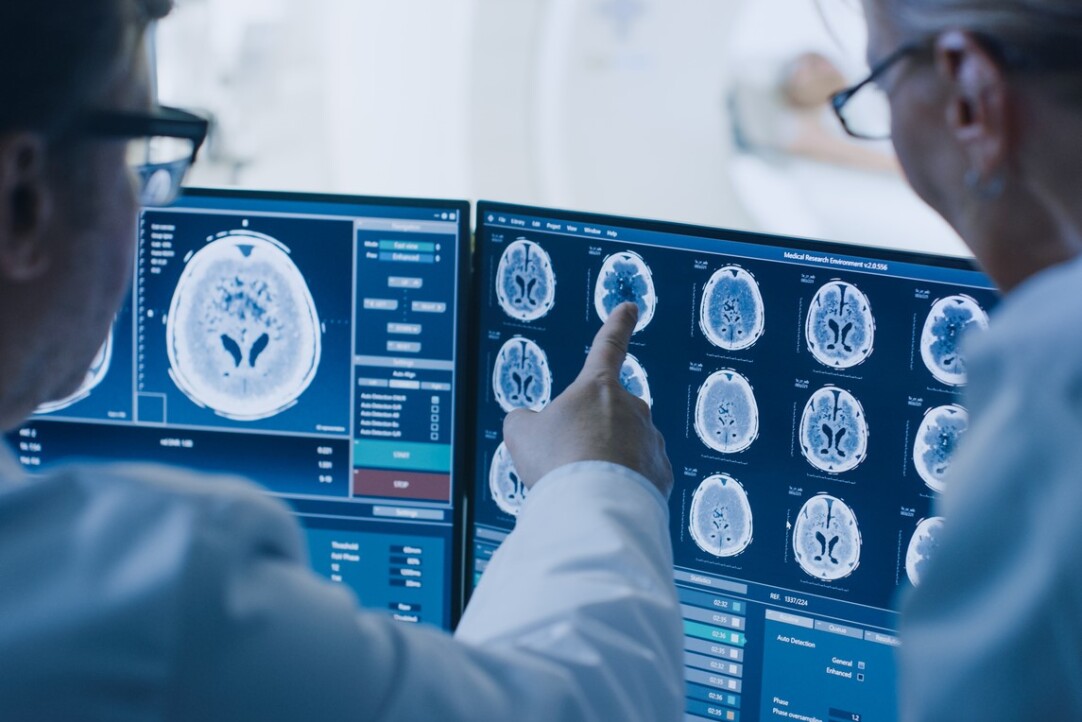Machine Learning Links Two New Genes to Ischemic Stroke

A team of scientists from HSE University and the Kurchatov Institute used machine learning methods to investigate genetic predisposition to stroke. Their analysis of the genomes of over 5,000 people identified 131 genes linked to the risk of ischemic stroke. For two of these genes, the association was found for the first time. The paper has been published in PeerJ Computer Science.
Ischemic stroke is a major cause of death and disability worldwide. This condition occurs when blood supply to a part of the brain is interrupted, causing cell death and impaired brain function. Scientists have long studied the genetic factors influencing stroke risk, but a definitive list of genes linked to stroke predisposition has yet to be established. There are hopes that artificial intelligence methods may provide answers in this regard.
A team of scientists from the HSE Faculty of Computer Science and the Kurchatov Institute proposed using machine learning algorithms to analyse genetic predisposition to stroke. They analysed genomic data from 5,500 unrelated individuals over the age of 55, including ischemic stroke survivors and their healthy counterparts. Samples for the study were collected from 11 laboratories in Europe and 13 in the United States.
The analysis was based on the concept of ranking through learning. First, the researchers developed a predictive model in which the key parameter was the presence or absence of a stroke. Single nucleotide polymorphisms (SNPs), which are variations in the genome at specific sites, were used as markers. The scientists then ranked these markers and selected the most significant ones.
SNPs were analysed and selected using various methods, enabling a new analysis of the data and the identification of genes previously not associated with ischemic stroke. The list of 'suspicious' genetic markers common to two or more methods highlights the reliability of the results.
Working with such a large dataset—nearly 900,000 SNPs per 5,500 participants—required us to move beyond purely statistical analysis methods. Machine learning made it possible to process all of this. As a result, we identified 131 genes, most of which had already been linked to ischemic stroke. However, for two of these genes, this was the first time we discovered the association,' explains Dmitry Ignatov, Head of the Laboratory for Models and Methods of Computational Pragmatics at HSE University.
In particular, the scientists found an association between stroke and ACOT11, a gene involved in fatty acid metabolism and shown in animal experiments to affect inflammatory processes and blood lipid levels. The second gene newly linked to ischemic stroke is UBQLN1, which is involved in the mechanisms that protect cells from oxidative stress. There is evidence that a mutation in this gene is associated with neurodegenerative diseases.
These discoveries could help develop multigenic risk models that predict a person's predisposition to stroke. Information about the newly associated genes could also serve as the foundation for developing drugs and therapies aimed at reducing the risk of ischemic stroke.

Gennady Khvorykh
'Identifying two new stroke-associated genes is an excellent outcome for any method. Our machine learning approach clearly holds strong potential for detecting genes linked to diseases that result from a variety of factors,' comments Gennady Khvorykh, Chief Specialist at the Kurchatov Institute.
The proposed approach to analysing genetic markers demonstrates versatility and can be effectively adapted for a wide range of studies beyond ischemic stroke. This methodology can be applied to any diseases or markers with data available in the 'sample—SNP—class' format.
'Although we initially developed this tool for a specific task, the results reveal its potential in a broader context. The ability to work with a variety of genetic data makes our method valuable to researchers across various fields of biology and medicine,' says Stefan Nikolić, graduate of the Faculty of Computer Science and the Doctoral School of Computer Science at HSE University.
See also:
HSE Psycholinguists Launch Digital Tool to Spot Dyslexia in Children
Specialists from HSE University's Centre for Language and Brain have introduced LexiMetr, a new digital tool for diagnosing dyslexia in primary school students. This is the first standardised application in Russia that enables fast and reliable assessment of children’s reading skills to identify dyslexia or the risk of developing it. The application is available on the RuStore platform and runs on Android tablets.
Physicists Propose New Mechanism to Enhance Superconductivity with 'Quantum Glue'
A team of researchers, including scientists from HSE MIEM, has demonstrated that defects in a material can enhance, rather than hinder, superconductivity. This occurs through interaction between defective and cleaner regions, which creates a 'quantum glue'—a uniform component that binds distinct superconducting regions into a single network. Calculations confirm that this mechanism could aid in developing superconductors that operate at higher temperatures. The study has been published in Communications Physics.
Neural Network Trained to Predict Crises in Russian Stock Market
Economists from HSE University have developed a neural network model that can predict the onset of a short-term stock market crisis with over 83% accuracy, one day in advance. The model performs well even on complex, imbalanced data and incorporates not only economic indicators but also investor sentiment. The paper by Tamara Teplova, Maksim Fayzulin, and Aleksei Kurkin from the Centre for Financial Research and Data Analytics at the HSE Faculty of Economic Sciences has been published in Socio-Economic Planning Sciences.
Larger Groups of Students Use AI More Effectively in Learning
Researchers at the Institute of Education and the Faculty of Economic Sciences at HSE University have studied what factors determine the success of student group projects when they are completed with the help of artificial intelligence (AI). Their findings suggest that, in addition to the knowledge level of the team members, the size of the group also plays a significant role—the larger it is, the more efficient the process becomes. The study was published in Innovations in Education and Teaching International.
New Models for Studying Diseases: From Petri Dishes to Organs-on-a-Chip
Biologists from HSE University, in collaboration with researchers from the Kulakov National Medical Research Centre for Obstetrics, Gynecology, and Perinatology, have used advanced microfluidic technologies to study preeclampsia—one of the most dangerous pregnancy complications, posing serious risks to the life and health of both mother and child. In a paper published in BioChip Journal, the researchers review modern cellular models—including advanced placenta-on-a-chip technologies—that offer deeper insights into the mechanisms of the disorder and support the development of effective treatments.
Using Two Cryptocurrencies Enhances Volatility Forecasting
Researchers from the HSE Faculty of Economic Sciences have found that Bitcoin price volatility can be effectively predicted using Ethereum, the second-most popular cryptocurrency. Incorporating Ethereum into a predictive model reduces the forecast error to 23%, outperforming neural networks and other complex algorithms. The article has been published in Applied Econometrics.
Administrative Staff Are Crucial to University Efficiency—But Only in Teaching-Oriented Institutions
An international team of researchers, including scholars from HSE University, has analysed how the number of non-academic staff affects a university’s performance. The study found that the outcome depends on the institution’s profile: in research universities, the share of administrative and support staff has no effect on efficiency, whereas in teaching-oriented universities, there is a positive correlation. The findings have been published in Applied Economics.
Physicists at HSE University Reveal How Vortices Behave in Two-Dimensional Turbulence
Researchers from the Landau Institute for Theoretical Physics of the Russian Academy of Sciences and the HSE University's Faculty of Physics have discovered how external forces affect the behaviour of turbulent flows. The scientists showed that even a small external torque can stabilise the system and extend the lifetime of large vortices. These findings may improve the accuracy of models of atmospheric and oceanic circulation. The paper has been published in Physics of Fluids.
Clouds Are Closer Than They Appear: Results of iFORA Foresight Session
Management intellectualisation, synergy with AI, and the transition to microclouds are expected to be the main trends in the digital economy over the next decade. Experts in cloud technologies gathered at HSE University for a foresight session to discuss these trends and their evolution up to 2040. They explored how process intellectualisation would develop, as well as ideas for storing data in space to minimise environmental impact.
Solvent Instead of Toxic Reagents: Chemists Develop Environmentally Friendly Method for Synthesising Aniline Derivatives
An international team of researchers, including chemists from HSE University and the A.N. Nesmeyanov Institute of Organoelement Compounds of the Russian Academy of Sciences (INEOS RAS), has developed a new method for synthesising aniline derivatives—compounds widely used in the production of medicines, dyes, and electronic materials. Instead of relying on toxic and expensive reagents, they proposed using tetrahydrofuran, which can be derived from renewable raw materials. The reaction was carried out in the presence of readily available cobalt salts and syngas. This approach reduces hazardous waste and simplifies the production process, making it more environmentally friendly. The study has been published in ChemSusChem.



